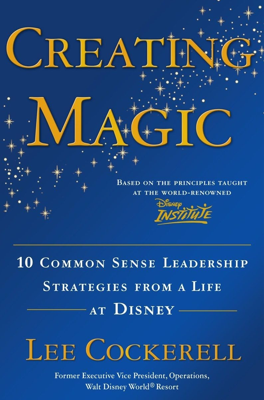Make Your People Your Brand
People as Brand Ambassadors: Disney's success in improving food services underlines the concept that employees represent the brand. Lee Cockerell explains that proficient, well-managed people directly contribute to a brand's reputation, more so than just the products or logos.
Defining Ideal Candidates: Clearly define what qualities, skills, and accomplishments are desired in a candidate. This improves the odds of hiring someone closer to the "ideal" fit for the role, enhancing the brand and operational success.
Evaluating Candidate Competencies: During the hiring process, assess candidates across four main areas:
- Technical Competence: Knowledge and skills for the job.
- Management Competence: Organizational and planning abilities.
- Technological Competence: Familiarity with relevant tools and technologies.
- Leadership Competence: Potential and skills for leading others.
Non-Traditional Hiring: Encourage looking beyond conventional profiles and experiences, which can bring unique skills and insights that enhance a team’s capabilities. Examples include hiring leaders with diverse past experiences, contributing to fresh perspectives and solutions.
Inclusive Hiring Process: Engage various team members in the hiring process, ensuring that multiple perspectives inform the final decision. This leads to better integration and acceptance of new hires into existing teams.
Prioritizing Talent Over Resumes: Focus more on the inherent talent and potential of candidates rather than just their presented resumes, which might not fully reflect their capabilities and past successes.
Cultural Fit and Team Chemistry: A candidate's ability to fit culturally and work harmoniously within the team is crucial. Misalignment can disrupt team dynamics and reduce effectiveness, highlighting the need for thorough personality and team compatibility assessments.
Development and Promotion from Within: Continuously scout for potential leaders within the organization. Providing training and promotion opportunities to existing employees fortifies engagement, capitalizes on demonstrated competencies, and enhances retention.
Regular Performance Evaluations: Maintain a constant evaluation mechanism to not only ensure high performance but also to identify leadership potentials, guide development paths, and foster a culture of recognition and accountability.
Handling Misfit: Recognize when employees are not well-suited to their roles and act decisively. Providing employees with roles that align better with their skills is essential for maintaining organizational harmony and individual job satisfaction.
Taking Decisive Action: Act quickly and compassionately when termination is necessary to minimize negative impacts on both the individual and the team.
Staying Connected with Former Talent: Keep in touch with talented individuals who leave, as their future circumstances might change, making it beneficial for them to return and contribute to the organization once more.
Action Steps for Leaders:
- Verify candidates' competencies thoroughly.
- Define what an ideal candidate would look like.
- Prioritize talent and cultural fit over resumes.
- Engage the team in the hiring process.
- Use a comprehensive, thoughtful approach to selecting candidates.
- Maintain open lines of communication, ensuring a clear understanding of job requirements and expectations.
In essence, Cockerell emphasizes that the people within an organization define its brand and contribute significantly to its success. By hiring and nurturing the right people, leaders can enhance both employee satisfaction and organizational performance.
